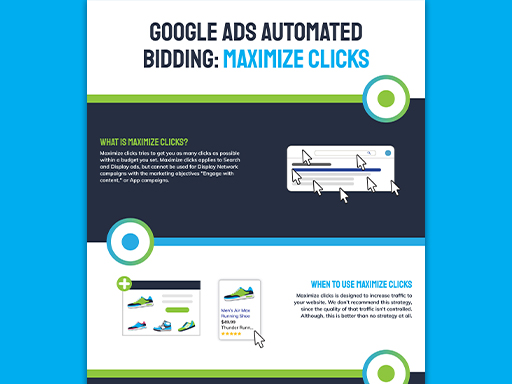Amazon Ads can be a mysterious process. Unlike Google, Amazon is not very transparent about the factors that influence ad placement, and ultimately, ad performance. Often, which ads succeed seems entirely arbitrary – but there are some tactics advertisers can take to manage successful campaigns.
We’ve managed thousands of Amazon product ads, and we’ve learned a few things along the way. Here are some of our tried-and-true strategies for successful Amazon Ads campaigns!

Strategy #1: How to Win the Buy Box
The Buy Box is one of the most important factors in Amazon ad placement – but Amazon doesn’t offer much transparency in the factors that determine which products are featured.
The best way to improve your chances of being included in the Buy Box is to optimize your Amazon ads. Highly relevant ads not only have a better chance of winning the Buy Box, but have a better chance of attracting clicks and ultimately customers. Improved click-through and conversion rates also mean ad spend goes further and drives more profit!
Four factors that are especially important in improving ad relevancy and performance are product pricing, FBA program participation, product reviews, and title optimization.
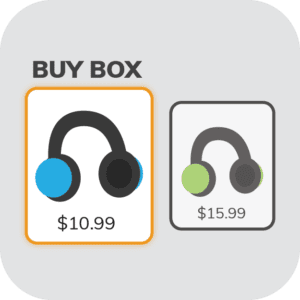
1. Product Pricing
Product pricing is a major Buy Box factor. Products that aren’t price-competitive aren’t attractive to consumers – and Amazon is less likely to feature them.
Luckily, there’s an easy fix. Amazon provides a report with suggested prices for products identified as non-price-competitive. Adjusting pricing to meet these suggestions (as long as the product remains profitable) helps ensure product ads appear on Amazon.
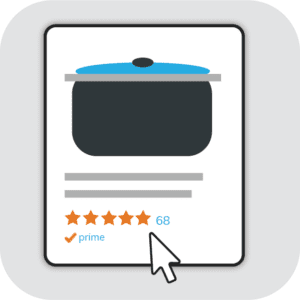
2. Product Reviews
Good product reviews provide credibility and encourage other shoppers to buy – social proof goes a long way!
Good reviews aren’t necessarily easy – sellers can ask buyers to review items, and Amazon’s Early Reviewer program encourages buyers to leave reviews on products that don’t currently have many. However, sellers can’t offer any sort of benefit in exchange for a review: no payments, refunds, or free products. The best way to build good reviews? Offer great products, and be responsive to customers.
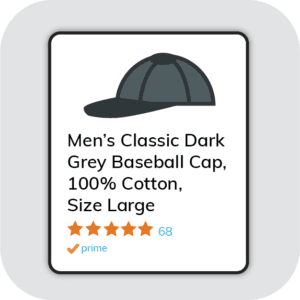
3. Title Optimization
Optimizing product titles can help boost products into the Buy Box. Every word in a product title is independently searchable, so every word counts!
Including brand, color, size, material, and any other key features helps maximize a product’s ability to serve on a wide variety of terms. Check out Amazon’s search terms report to see if there are key terms that should be added – products appear more relevant to search terms you plan to advertise on if those terms are included in the title.

4. FBA (Fulfilled by Amazon) Program
Amazon places a high priority on products in the Fulfilled by Amazon (FBA) program, because these orders are often fulfilled faster and are Prime eligible.
There are pros and cons to participation: orders fulfilled by Amazon are eligible for one- or two-day shipping, making them really attractive to the average Amazon consumer. However, participation in this program comes with extra fees and commissions on the seller side, reducing the available profit per sale.

Strategy #2: Improve Amazon Campaign Targeting
Amazon Ads divides campaign targeting into two types: automatic targeting, and manual targeting. Automatic campaigns use the Amazon system to display product ads to related search terms. In manual campaigns, advertisers choose the keywords they’d like to target.For example, a retailer selling tennis rackets may create the following campaigns:
An automatic campaign that targets all women’s Tennis Co. brand rackets. Each racket is given its own ad group, and Amazon determines which searches to serve which product ads. A Women’s Tennis Co. Max 700 racket is likely to serve on terms like “max 700 women’s racket” but might also serve on more general terms like “women’s tennis racket,” depending on the bid.
A manual campaign that targets valuable keywords and phrases. Again, each racket is given its own ad group, but this time, the advertiser also adds terms to target. An ad group for the Women’s Tennis Co. Max 700 racket is likely to contain terms like “tennis co. max racket” and “Women’s tennis max 700 racket,” but might exclude more generic terms.
Each campaign type has pros and cons. Advertisers run the risk of wasting some spend on generic terms with automatic campaigns, but these campaigns also tend to uncover valuable terms and phrases that advertisers may not consider adding to manual campaigns. Manual campaigns are much more labor-intensive, but allow advertisers to include insights from other channels, like Google Shopping.
How to Choose Keywords for Your Amazon Ads

Like Google Shopping, choosing keywords for Amazon can be an arduous process. Product titles and descriptors make a good starting point, along with synonyms for key words and terms, SKUs, and ASINs. Competitor product titles and brands can also be valuable. Here are some example keywords for products.
| Product | Keywords |
|---|---|
| Wilson 4000 Series Men’s Tennis Racket | men’s racket 4000 series; Wilson tennis rackets for men; Wilson racket 4050 |
| Babolat Pure Aero Tennis Racket | Babolat Pure racket; Pure Aero Racket; Babolat tennis racket |
Although keywords are only directly targeted in manual campaigns, automatic campaigns are still important. Successful search terms for these campaigns are a fantastic jumping-off point for identifying keywords to use in manual campaigns.
Use Google Shopping Insights on Amazon

Search terms from Google Shopping ads open a whole new set of opportunities for keywords.
Google Ads’ search term report can tell you which terms are driving the most revenue, and which are the most profitable. You can even use an ngram analysis to derive further insights (more on that in our e-book!) Hint: the terms that drive the most revenue aren’t always the most profitable. A lot depends on the cost of goods of the products that were sold, and the ad spend required to drive sales attributable to those terms.
Once you have a list of profitable terms, you can evaluate them for use on Amazon. Chances are, at least a few of them are relevant to your Amazon products and will be productive terms for manual targeting campaigns!
Unprofitable keywords on can be just as helpful. Any keywords eating a lot of spend with little to no sales and revenue are worth re-evaluating in Amazon campaigns as well.
The entire process also works in reverse. Terms that drive sales on Amazon are often good targets for Google paid search campaigns, and any unproductive Amazon search terms can be negated from Google advertising.

Strategy #3: Better Bidding in Amazon Ads

The Perils of Automated Bidding
There are some software solutions for Amazon Ads that work primarily on automated bidding. This seems like a win-win: easy to use, and advertisers can manage many more campaigns and ad groups than they could manually. Like most things that seem to good to be true, though – there’s a catch.
By and large, computers can’t be expected to monitor performance as closely, and as intelligently, as human beings. They’re incapable of making informed decisions about spend based on in-depth industry knowledge and experience, relying instead on recent trends and failing to catch anomalies in performance.
Automated systems also can’t react to sudden changes as adeptly as a human being can. Sales or events like Prime Day pose a real problem: you need to raise awareness in the days and weeks before the actual event, but an automated system won’t raise bids to meet this goal. The increase in sales and the higher CPCs that are a natural result of the event will also trigger the system to raise bids after the event is over – although sales and CPCs are much more likely to drop. This leaves you paying more for ads that are less likely to convert.
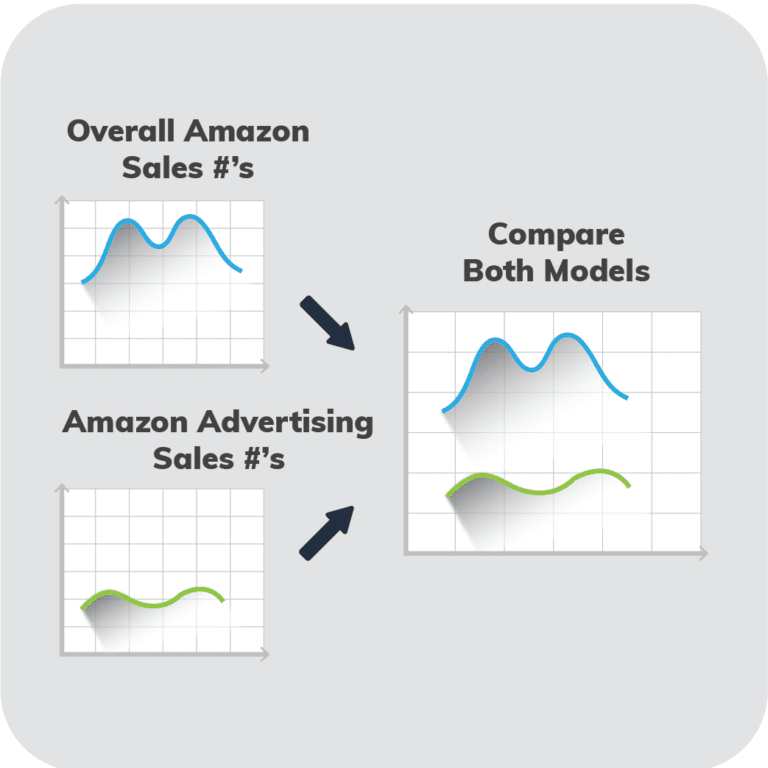
How to Account for Long Sales Cycles
Retailers with long sales cycles, such as those that sell high-ticket items, face special hurdles in advertising on Amazon because of the relatively short attribution window. It’s extremely difficult to link a purchase made 30 days from now to a campaign when the default Amazon attribution window is only 7 days. In many cases, a shopper could click on an ad while they’re browsing on Amazon, but by the time they come back to purchase the item, the attribution window is closed and the sale is no longer attributable to the original ad.
The best way to account for this problem is to include multiple data sources in your analysis. Overall Amazon sales numbers, available from Seller Central, are accurate and up-to-date because the retailer and/or Amazon need to be able to ship those orders promptly. By comparing the overall sales to Amazon advertising’s reported sales numbers, you can validate a certain amount of incremental lift attributable to advertising.
If you do need to make adjustments based solely on the sales attributed to campaigns, it’s best to bid conservatively. If you can tolerate a little more spend on Amazon under the assumption of sales lift, you can be a bit more aggressive, but generally speaking, you should be more limited in your bid adjustments than on other platforms.

Ready to Grow Your Business on Amazon?
We’d love to get to know your business and learn about your goals. Get in touch with us today for a free account analysis!





